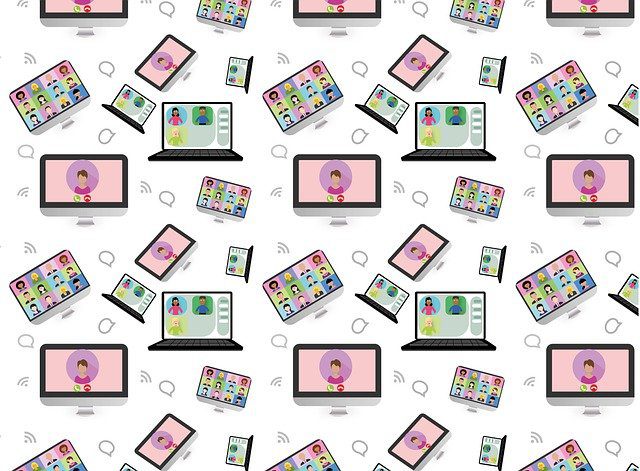Telehealth includes various telemedicine systems and modes of delivery that allow health services from a distance. This also includes teledentistry. Simply put, teledentistry provides dental care delivery, diagnosis, consultation, transfer of dental information, and more with the use of electronic information, imaging, and communication technologies.
Like telehealth, teledentistry can take the following forms:
- Synchronous live stream of data or video conferencing between the dentist & the patient.
- Asynchronous ability to store, as well as forward data. This also includes the ability to send treatment plans and more to a remote provider or to the patient.
- Remote patient monitoring that involves the collection of personal dental health information & securely transmitting it to a practitioner.
- Mobile health involves the use of mobile devices like smartphones to provide dental health education to the public.
The advantages of telemedicine accrue to both dentists & patients in the following ways:
- Improving the dental hygiene of patients – Teledentistry goes a long way in improving the oral health of patients without them visiting dental offices.
- Affordability – Teledentistry has proven benefits that accrue from the reduction of cost of care, the reduction in travel time, and more.
- Accessibility – The big advantage of teledentistry for patients is the fact that it makes dentistry accessible to a wide range of people, especially to underserved communities. In fact, teledentistry can narrow the oral health care gaps for people in rural areas. This is also true of socio-economically deprived communities. The advantage that teledentistry offers in these communities is that it takes away the need to commute long distances and also offers a cost advantage.
On the dentists’ end, it takes away the need to supplement clinician staffing in far-flung areas while allowing them to expand their reach to patients beyond the reach of their offices. In fact, it reaches people who would otherwise postpone or delay dental care. With data being digitally delivered for diagnosis and necessary follow-up care protocols, convenience got a whole new name in teledentistry. Specialist interactions are also more streamlined, especially since documentation and imaging is available in a secure digital location.
- Comfort levels – Given patient comfort levels with modern forms of communication, teledentistry has a distinct advantage. Patients are extremely comfortable communicating with their oral care providers via text, email, or video as opposed to face-to-face communication which sometimes leads to anxiety from being in the proverbial dentist’s chair.
- High-quality care – Data reveals that telemedicine offers the same level of care and success rates as in-patient visits. In fact, quality control and productivity systems can be enhanced through remote access.
- Preventive care – Teledentistry can also provide preventive care through mobile stations. You can therefore get your teeth cleaned or X-rays taken at a time convenient to you.
- Dentist revenues – Teledentistry is seen to have a linear correlation with dentist revenues. Dentists who offer teledentistry find that they get more bookings for dental checkups and evaluations while they can reserve office visits for patients who have severe issues. This results in the efficient use of both time and resources, and it helps increase your clinic’s revenue.
- Integration of oral and general health – Teledentistry goes a long way in improving overall health for most patients.
What technology is necessary for teledentistry?
Teledentistry is, of course, driven by technology. The basic technology that needs to be in place includes:
- Hardware and software that provides HIPAA-compliant communication capabilities.
- Imaging capability via intraoral cameras and a portable X-ray device that can capture as well as transmit diagnostic images.
- Internet access for the dentist and the patient.
Some of the features that would help dentists set up an effective teledentistry option include:
- Online scheduling
- Digital forms
- Teleconsultation
- Text-to-pay
Some of the best practices to implement teledentistry also include:
- Consulting other providers who have been able to successfully implement it
- Studying and complying with the rules and regulations related to teledentistry, including the Health Insurance Portability & Accountability Act of 1996.
- Training your employees
- Marketing your teledentistry service
When would you use teledentistry?
Teledentistry can be used both in an emergency, as well as in routine care solutions, although most emergencies would in all probability need an in-person visit. You will also require a dentist’s in-person visit for tooth extraction, or such services, which can’t be done online.
However, even in such situations, the tele-dental visit can help you manage your symptoms until your in-person appointment is scheduled.
Popular teledentistry services include emergency evaluations, post-operative, as well as non-emergency orthodontic evaluations.
In addition, oral health classes and preventive dental care can also benefit from teledentistry.
SUMMARY
While teledentistry cannot fully replace in-person exams, or complex dental procedures, it is an important tool to provide oral health care, evaluations, and consultations. The comfortable process has seen to increase the number of patients opting to see dentists.
Shorter waiting times, as well as quicker access to prescription medicine are some of the advantages that accrue to patients. On the dentist’s end, it results in an improved ability to serve a wide range of patients, keeping resources under check, as well as improved revenues.
During the pandemic, of course, its advantages have been tried and tested. However, even beyond the pandemic, teledentistry holds great promise to increase access to dental care at a lower cost. Leveraging teledentistry in the right way can solve the rising concerns of patients and practices across the country and the world!
ABOUT THE AUTHOR
Dr. Sharda Patel runs a family dentistry practice in Pleasanton, CA. She is a graduate from the Tufts University of Dental Medicines.
She is a member of the American Dental Association, California Dental Association, and the American Dental Education Association.
She is thorough, caring, and dedicated to patient satisfaction and comfort.
You may find her reading a paperback on weekends.
FEATURED IMAGE CREDIT: Alexandra_Koch from Pixabay.


